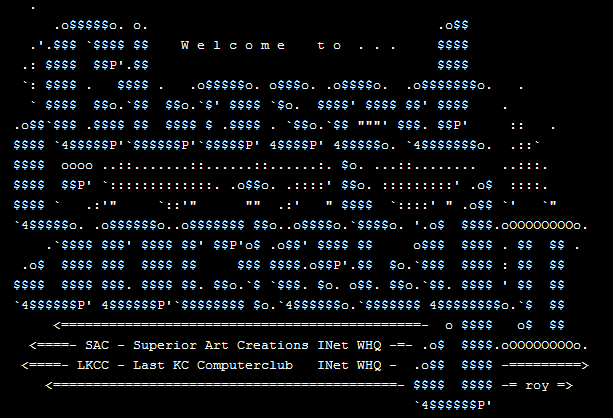|
Expressive Intelligence Studio
The Expressive Intelligence Studio is a research group at the University of California, Santa Cruz, established to conduct research in the field of game design technology. The studio is currently being run by Michael Mateas and Noah Wardrip-Fruin, who work closely with the students in their research. History When Michael Mateas formed the group back in 2006, his goal was to "stretch the students into being creative." He did not want the game design program at UCSC to be "just about photo-realistic graphics." Instead he wanted to form an ambitious group of students that grabbed the attention of the gaming industry. According to Noah Wardrip-Fruin, a major benefit for establishing the Expressive Intelligence Studio at UCSC is its proximity to Silicon Valley, where many game companies are located. In 2011, UCSC was listed 7th on Princeton Review's list of top graduate game design programs. Research Most of the research done by the Expressive Intelligence Studio is done through major ... [...More Info...] [...Related Items...] OR: [Wikipedia] [Google] [Baidu] |
University Of California, Santa Cruz
The University of California, Santa Cruz (UC Santa Cruz or UCSC) is a public university, public Land-grant university, land-grant research university in Santa Cruz, California. It is one of the ten campuses in the University of California system. Located on Monterey Bay, on the edge of the coastal community of Santa Cruz, the campus lies on of rolling, forested hills overlooking the Pacific Ocean. Founded in 1965, UC Santa Cruz began with the intention to showcase progressive, cross-disciplinary undergraduate education, innovative teaching methods and contemporary architecture. The residential college system consists of ten small colleges that were established as a variation of the Oxbridge collegiate university system. Among the Faculty is 1 Nobel Prize Laureate, 1 Breakthrough Prize in Life Sciences recipient, 12 members from the United States National Academy of Sciences, National Academy of Sciences, 28 members of the American Academy of Arts and Sciences, and 40 members o ... [...More Info...] [...Related Items...] OR: [Wikipedia] [Google] [Baidu] |
Georgia Institute Of Technology
The Georgia Institute of Technology, commonly referred to as Georgia Tech or, in the state of Georgia, as Tech or The Institute, is a public research university and institute of technology in Atlanta, Georgia. Established in 1885, it is part of the University System of Georgia and has satellite campuses in Savannah, Georgia; Metz, France; Shenzhen, China; and Singapore. The school was founded as the Georgia School of Technology as part of Reconstruction plans to build an industrial economy in the post-Civil War Southern United States. Initially, it offered only a degree in mechanical engineering. By 1901, its curriculum had expanded to include electrical, civil, and chemical engineering. In 1948, the school changed its name to reflect its evolution from a trade school to a larger and more capable technical institute and research university. Today, Georgia Tech is organized into six colleges and contains about 31 departments/units, with emphasis on science and technology. I ... [...More Info...] [...Related Items...] OR: [Wikipedia] [Google] [Baidu] |
Video Game Organizations
Video is an Electronics, electronic medium for the recording, copying, playback, broadcasting, and display of moving picture, moving image, visual Media (communication), media. Video was first developed for mechanical television systems, which were quickly replaced by cathode-ray tube (CRT) systems which, in turn, were replaced by flat panel displays of several types. Video systems vary in display resolution, Display aspect ratio, aspect ratio, refresh rate, color capabilities and other qualities. Analog and digital variants exist and can be carried on a variety of media, including radio broadcast, magnetic tape, optical discs, Video file format, computer files, and Streaming media, network streaming. History Analog video Video technology was first developed for mechanical television systems, which were quickly replaced by cathode-ray tube (CRT) television systems, but several new technologies for video display devices have since been invented. Video was originally excl ... [...More Info...] [...Related Items...] OR: [Wikipedia] [Google] [Baidu] |
Game Artificial Intelligence
In video games, artificial intelligence (AI) is used to generate responsive, adaptive or intelligent behaviors primarily in non-player characters (NPCs) similar to human-like intelligence. Artificial intelligence has been an integral part of video games since their inception in the 1950s. AI in video games is a distinct subfield and differs from academic AI. It serves to improve the game-player experience rather than machine learning or decision making. During the golden age of arcade video games the idea of AI opponents was largely popularized in the form of graduated difficulty levels, distinct movement patterns, and in-game events dependent on the player's input. Modern games often implement existing techniques such as pathfinding and decision trees to guide the actions of NPCs. AI is often used in mechanisms which are not immediately visible to the user, such as data mining and procedural-content generation. In general, game AI does not, as might be thought and sometimes i ... [...More Info...] [...Related Items...] OR: [Wikipedia] [Google] [Baidu] |
New Media Art
New media art includes artworks designed and produced by means of new media, electronic media technology, technologies, comprising virtual art, computer graphics, computer animation, digital art, interactive art, sound art, Internet art, video games, robotics, 3D printing, and cyborg art. The term defines itself by the thereby created artwork, which differentiates itself from that deriving from conventional visual arts (i.e. architecture, painting, sculpture, etc.). New Media art has origins in the worlds of science, art, and performance. Some common themes found in new media art include databases, political and social activism, Afrofuturism, feminism, and identity, a ubiquitous theme found throughout is the incorporation of new technology into the work. The emphasis on medium is a defining feature of much contemporary art and many art schools and major universities now offer majors in "New Genres" or "New Media" and a growing number of graduate programs have emerged international ... [...More Info...] [...Related Items...] OR: [Wikipedia] [Google] [Baidu] |
New Media
New media describes communication technologies that enable or enhance interaction between users as well as interaction between users and content. In the middle of the 1990s, the phrase "new media" became widely used as part of a sales pitch for the influx of interactive CD-ROMs for entertainment and education. The new media technologies, sometimes known as Web 2.0, include a wide range of web-related communication tools, including blogs, wikis, online social networking, virtual worlds, and other social media platforms. The phrase "new media" refers to computational media that share material online and through computers. New media inspire new ways of thinking about older media. Instead of evolving in a more complicated network of interconnected feedback loops, media does not replace one another in a clear, linear succession. What is different about new media is how they specifically refashion traditional media and how older media refashion themselves to meet the challenges of new ... [...More Info...] [...Related Items...] OR: [Wikipedia] [Google] [Baidu] |
New Media Studies
New media studies is an academic discipline that explores the intersections of computing, science, the humanities, and the visual and performing arts. Janet Murray, a prominent researcher in the discipline, describes this intersection as "a single new medium of representation, the digital medium, formed by the braided interplay of technical invention and cultural expression at the end of the 20th century". The main factor in defining new media is the role the Internet plays; new media is effortlessly spread instantly. The category of new media is occupied by devices connected to the Internet, an example being a smartphone or tablet. Television and cinemas are commonly thought of as new media but are ruled out since the invention was before the time of the internet. New media studies examines ideas and insights on media from communication theorists, programmers, educators, and technologists. Among others, the work of Marshall McLuhan is viewed as one of the cornerstones of the stud ... [...More Info...] [...Related Items...] OR: [Wikipedia] [Google] [Baidu] |
Interactive Storytelling
Interactive storytelling (also known as interactive drama) is a form of digital entertainment in which the storyline is not predetermined. The author creates the setting, characters, and situation which the narrative must address, but the user (also reader or player) experiences a unique story based on their interactions with the story world. The architecture of an interactive storytelling program includes a drama manager, user model, and agent model to control, respectively, aspects of narrative production, player uniqueness, and character knowledge and behavior. Together, these systems generate characters that act "human," alter the world in real-time reactions to the player, and ensure that new narrative events unfold comprehensibly. The field of study surrounding interactive storytelling encompasses many disparate fields, including psychology, sociology, cognitive science, linguistics, natural language processing, user interface design, computer science, and emergent intellig ... [...More Info...] [...Related Items...] OR: [Wikipedia] [Google] [Baidu] |
Game Studies
Game studies, also known as ludology (from ''ludus'', "game", and ''-logia'', "study", "research"), is the study of games, the act of playing them, and the players and cultures surrounding them. It is a field of cultural studies that deals with all types of games throughout history. This field of research utilizes the tactics of, at least, folkloristics and cultural heritage, sociology and psychology, while examining aspects of the design of the game, the players in the game, and the role the game plays in its society or culture. Game studies is oftentimes confused with the study of video games, but this is only one area of focus; in reality game studies encompasses all types of gaming, including sports, board games, etc. Before video games, game studies was rooted primarily in anthropology. However, with the development and spread of video games, games studies has diversified methodologically, to include approaches from sociology, psychology, and other fields. There are now a n ... [...More Info...] [...Related Items...] OR: [Wikipedia] [Google] [Baidu] |
Stanford Research Institute Problem Solver
The Stanford Research Institute Problem Solver, known by its acronym STRIPS, is an automated planner developed by Richard Fikes and Nils Nilsson in 1971 at SRI International. The same name was later used to refer to the formal language of the inputs to this planner. This language is the base for most of the languages for expressing automated planning problem instances in use today; such languages are commonly known as action languages. This article only describes the language, not the planner. Definition A STRIPS instance is composed of: * An initial state; * The specification of the goal states – situations which the planner is trying to reach; * A set of actions. For each action, the following are included: ** preconditions (what must be established before the action is performed); ** postconditions (what is established after the action is performed). Mathematically, a STRIPS instance is a quadruple \langle P,O,I,G \rangle, in which each component has the following meaning: ... [...More Info...] [...Related Items...] OR: [Wikipedia] [Google] [Baidu] |
Action Language
In computer science, an action language is a language for specifying state transition systems, and is commonly used to create formal models of the effects of actions on the world. Action languages are commonly used in the artificial intelligence and robotics domains, where they describe how actions affect the states of systems over time, and may be used for automated planning. Action languages fall into two classes: action description languages and action query languages. Examples of the former include STRIPS, PDDL, Language A (a generalization of STRIPS; the propositional part of Pednault's ADL), Language B (an extension of A adding ''indirect effects'', distinguishing static and dynamic laws) and Language C (which adds indirect effects also, and does not assume that every fluent is automatically "inertial"). There are also the Action Query Languages P, Q and R. Several different algorithms exist for converting action languages, and in particular, action language C, to answer ... [...More Info...] [...Related Items...] OR: [Wikipedia] [Google] [Baidu] |
Agent Architecture
Agent architecture in computer science is a blueprint for software agents and intelligent control systems, depicting the arrangement of components. The architectures implemented by intelligent agents are referred to as cognitive architectures. The term agent is a conceptual idea, but not defined precisely. It consists of facts, set of goals and sometimes a plan library. Types Reactive architectures * SubsumptionDeliberative reasoning architectures * Procedural r ...[...More Info...] [...Related Items...] OR: [Wikipedia] [Google] [Baidu] |




